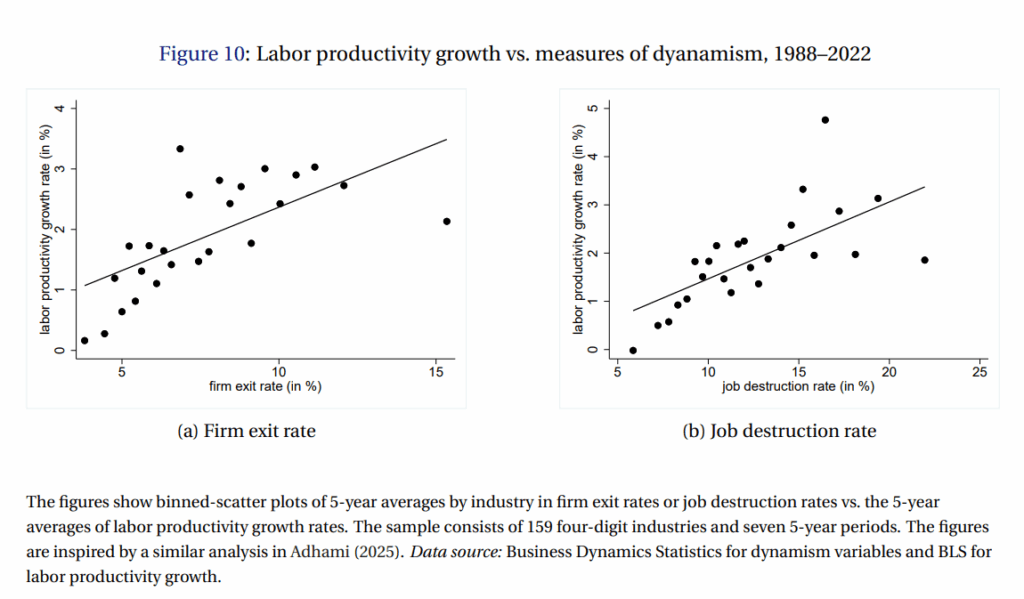Recent findings from the Nobel Prize Foundation highlight a significant correlation between firm exit rates, job destruction rates, and growth in labor productivity. The research, credited to economists Avner Mokyr, Philippe Aghion, and Peter Howitt, illustrates the concept of “creative destruction,” suggesting that the process of businesses failing can ultimately drive economic progress.
The analysis presented by the Nobel Prize Foundation emphasizes that as firms exit the market, the labor market experiences a transformation that can lead to enhanced productivity across various industries. This relationship indicates that while job losses can be challenging for individuals, they often pave the way for innovation and efficiency within the economy.
According to the data, there is a direct relationship between the rate at which firms close and the subsequent increases in labor productivity. This finding suggests that economies that allow for more dynamic market conditions may benefit from higher productivity levels. As businesses adapt, the workforce must also evolve, leading to a cycle of renewal and growth.
Understanding Creative Destruction
Creative destruction is a term popularized by economist Joseph Schumpeter, describing the process through which new innovations replace outdated ones, ultimately reshaping the economic landscape. The recent figure from the Nobel Prize Foundation succinctly encapsulates this concept, illustrating how job destruction, while often seen as negative, is a critical component of economic vitality.
The research indicates that economies characterized by high exit rates for firms tend to witness significant advancements in labor productivity. By removing less efficient businesses, resources are reallocated to more innovative and productive companies. Consequently, this leads to an overall enhancement in economic output and growth.
The Implications for Policy and Business
The findings pose important implications for policymakers and business leaders. Understanding the dynamics of creative destruction can inform strategies that foster a more resilient economy. Policymakers might consider creating supportive environments that facilitate the entry of new firms while managing the impacts of job losses on affected communities.
For businesses, this research underscores the importance of adaptability. Embracing change and innovation can lead to long-term sustainability and growth. Companies that prioritize research and development are often better positioned to thrive in a rapidly evolving market.
In summary, the insights from the Nobel Prize Foundation serve as a reminder that while job losses can be difficult, they are often a necessary part of economic evolution. By recognizing the benefits of creative destruction, economies can harness these challenges to drive productivity and foster innovation.





































































